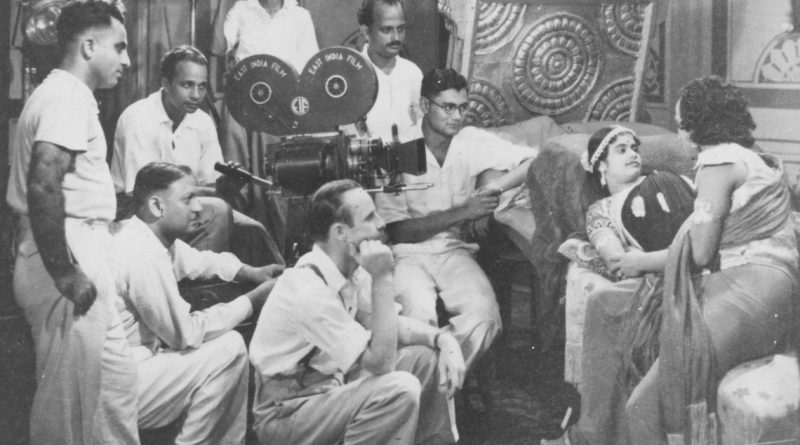History of Tamil Cinema
But today, sitting well in an exceedingly cushiony chair watching those massive screens at the multiplexes awaken with myriad colors and voices booming out of stupendous speakers with DTS result, the past achievements seem tiny. Fortunately or unfortunately, the past is extremely a lot of a neighborhood and parcel of this as is that the future. We’d not have in all probability reached this stage had the event and improvisations within the business not been initiated such an extended time agony.
The Tamil screenland celebrates year — 2032- hundred years of its spectacular existence. Speaking of the history of the Tamil film industry, the first picture in Tamil was created by Nataraja R. Mudaliar. He learned the tricks of cinematography at Pune and have become the official cameraman of Lord Curzon’s 1903 durbar. He discovered a studio on Miller’s Road, Keelpakam with a second-hand camera and monetary facilitate from S M Dharmalingam. He created ‘Keechaka Vadham’ inter-titled in Tamil, Hindi, and English. He created ‘Draupadi Vastrapaharanam’ that includes an Anglo-Indian player, Marian Hill, as Draupadi. In 1923, his studio was burnt down and his son died, prompting him to retire. Then came Raja P. K. Sandow (1894–1942). A fanatical athlete, he started his career as a stunt actor in S W Patankara’s National Film. He visited Mumbai and created silent movies. He became famed by the moving picture ‘Veer Bhemsean’. Returning to Tamil Nadu, he created several movies supported social reforms. Directing his 1st film, ‘Anaadhai Penn’, with R Padmanabhan, he began a series of reformist social movies. He created ‘Nandhanar’, the story of an untouchable Hindu Saint. He was the first one to place actors’ names in the film title. The Tamil Nadu government provides the ‘Raja Sandow Award’ for best movies, in memory of him. T P Rajalakshmi was a performer, producer and therefore the first Tamil female director. She learnt dance and music and created her stage debut beneath the tutelage of Sankaradas Swamigal, thought-about the father of recent Tamil theatre. In 1936, she directed the film ‘Miss Kamala’ (based on her 1st novel) and attained recognition because the initial woman director of the Tamil film industry. She additionally acted in Sandow’s ‘Usha Sundari’ and ‘Rajeswari’. Many a Tamil movie has set the record. Many have churned out ‘masala’ stuff and many others titillated an insatiable audience. But a few movies set the trend for many to follow, the impact on movie makers and the public being equally great. These trendsetters were a result of a good story line combined with brilliant direction and acting. Many such trendsetters were created not by veterans but by greenhorns, graduating from film institute’s and farms! When the masses stopped flocking to the theatres, these movies pulled them in by the droves. The first of these was, of course, ‘Haridas’ which ran for a record 768 days! Following closely was ‘Thyagabhoomi’ of 1939. Directed by K Subrahmanyan, this film was a watershed in the sense that it spoke eloquently about the prevailing social and patriotic scenario. ‘Nam Iruvar’ was screened in 1947. Even today some of the songs of in this film are standard fare on television and radio during occasions of national importance. This film comes down heavily on the evils of black marketeering and lust for money. Krishnan-Panju-directed ‘Parasakthi’ of 1952 was a controversial and dialogue-laden film that spoke of rationalism. The film showed the hero as a rationalist, having great affection for his sister, almost murdering a priest who tries to molest her inside the precincts of a temple. Like ‘Nam Iruvar’, this film too depicts the rampant black marketeering of the time. M Karunanidhi, the present Chief Minister of Tamil Nadu, penned the dialogues for this film, which were later released as an audio record. This film stressed the importance of dialogues for a film, and their delivery in an impassioned manner, epitomised by Sivaji Ganesan. It is to be noted that this was Sivaji’s first film, after several encore performances in stage dramas. ‘Devdas’ in 1953 introduced the concept of tragedy in movies, with the movie doing well in Hindi and Telugu which were filmed after the success of the Tamil version. In 1959, the Kollywood-produced film ‘Veerapandiya Kattabomman’ won the “Best Movie” award at that year’s Afro-Asian Festival. ‘Mani Ratnam’s ‘Nayagan’ (1987) tells the tale of an underworld don in Mumbai. This film is noteworthy for the way it was crafted Cinematographer P C Sriram and Art director Thotta Tharani added a new dimension to their respective fields. Kamal Haasan’s screen portrayal of the ruthless don won him the country’s best actor award and P C Sriram won the national award for cinematography and Thotta Tharani, for art direction. The invention of L D Forrest, Movie tone helped record the sound on the edge of the film. In the recently introduced Super 35 mm technology, sound will be recorded on the image itself. This way, not only will the image have superior clarity, but the sound too would be crystal clear. Selvaraghavan’s ‘Pudupettai’ and Kamal’s ‘Vettaiyadu Vilayadu’ adopted this Super 35 mm technology. ‘Malli’, released in 1998, won the Golden Pyramid Best Film award at that year’s Cairo International Film Festival, and ‘The Terrorist’ won the same award in 1999. In 2004, ‘Virumandi’ won the Best Asian Movie award. Other memorable movies that made a mark were Rajnikant-starrer ‘Padaiyappa’ which ran for 200 days, grossing Rs 40 crore. Mani Ratnam’s ‘Kannathil Muthamittal’, ‘Ghajini’ starring Suriya, Rajnikant’s ‘Chandramukhi’, Vikram’s ‘Anniyan,’ Kamal’s ‘Vettaiyadu Vilayadu’, K S Ravikumar’s directorial venture and Ajith-starrer ‘Varalaru’, ‘Guru’ by Mani Ratnam and now ‘Sivaji’, starring Rajnikant were all big budget movies that kept the audience glued to the screens. The average annual film output in the Tamil film industry has risen steadily in the 20th century. The Tamil film industry accounts for approximately 1 per cent of the gross domestic product of Tamil Nadu. Interestingly, the Tamil Nadu government has made provision for entertainment tax exemption for Tamil movies having pure Tamil word(s) in the title. Tamil cinema’s glorious 75 years of existence is being celebrated in a gala manner all over the world with star nights and award functions in Singapore, Malaysia, the UK, US, Japan and many more countries all through this year. The fete kick started on August 6, 2007, in the hometown of the Tamil film industry, Chennai, the capital of Tamil Nadu.
Journey continue……….!




